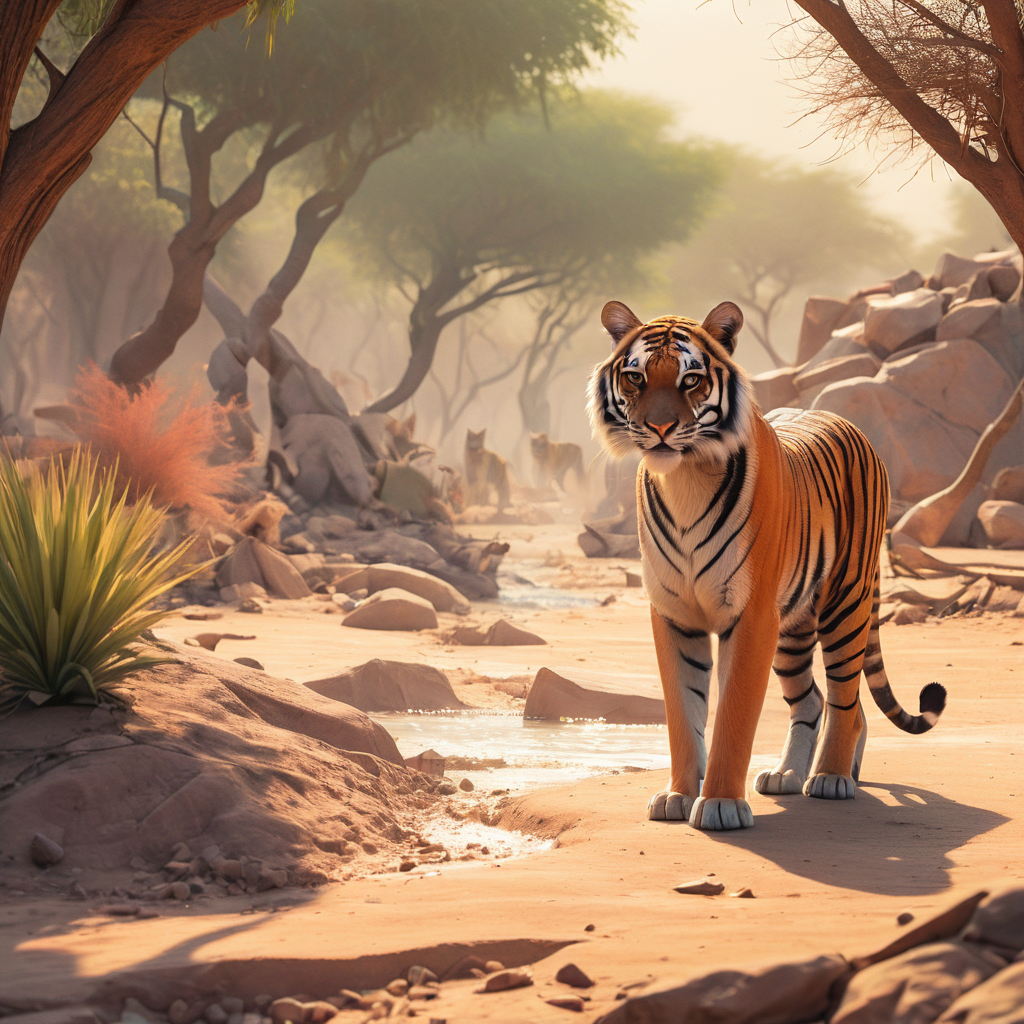As the sun climbs higher in the sky and temperatures soar, India braces itself for another summer of blistering heat. With each passing year, summers seem to grow harsher, leaving both humans and wildlife struggling to cope with the relentless onslaught of the sun’s rays.
But while we may retreat indoors or seek solace in air-conditioned comfort, spare a thought for the creatures that call the great outdoors their home. From the dense jungles of the Western Ghats to the arid plains of Rajasthan, wildlife across India is feeling the heat in more ways than one.
For the Majestic Bengal Tiger, the scorching summer brings with it a myriad of challenges. With water sources drying up and prey becoming scarce, these apex predators must roam farther in search of sustenance, putting them at greater risk of conflict with humans. In the forests of central India, where temperatures often exceed 40 degrees Celsius, even finding shade can be a matter of life and death for these magnificent beasts.
Meanwhile, in the Thar Desert, the Indian Desert Fox must contend with soaring temperatures and dwindling water sources. With every passing day, the harsh summer sun threatens to push these already endangered species to the brink of extinction.
But it’s not just the big cats and desert dwellers that are feeling the heat. From the smallest insects to the largest elephants, wildlife of all shapes and sizes are struggling to adapt to changing climatic conditions. Birds, unable to find respite from the heat, are falling victim to heatstroke in alarming numbers, while reptiles and amphibians are forced to seek refuge underground to escape the scorching sun.
As we witness the toll that summer takes on our natural world, it becomes increasingly clear that we must take action to protect the creatures that share our planet. From reducing our carbon footprint to conserving water and preserving habitats, there are countless ways in which each one of us can make a difference.
Innovative initiatives, such as setting up waterholes in wildlife reserves and planting drought-resistant vegetation, offer hope for the future of India’s wildlife. Real-life heroes, like the forest rangers and conservationists who work tirelessly to protect endangered species, serve as shining examples of what can be achieved when we come together for a common cause.
At Jaywik, we are committed to safeguarding India’s precious wildlife for generations to come. Through our conservation efforts and community outreach programs, we strive to create a world where humans and wildlife can coexist in harmony. But we cannot do it alone. It is only through the collective efforts of individuals like you that we can truly make a difference.
So this summer, as the mercury rises and the sun beats down, let us remember the plight of India’s wildlife and take action to ensure their survival. Together, we can build a future where both humans and animals thrive in the face of adversity.

